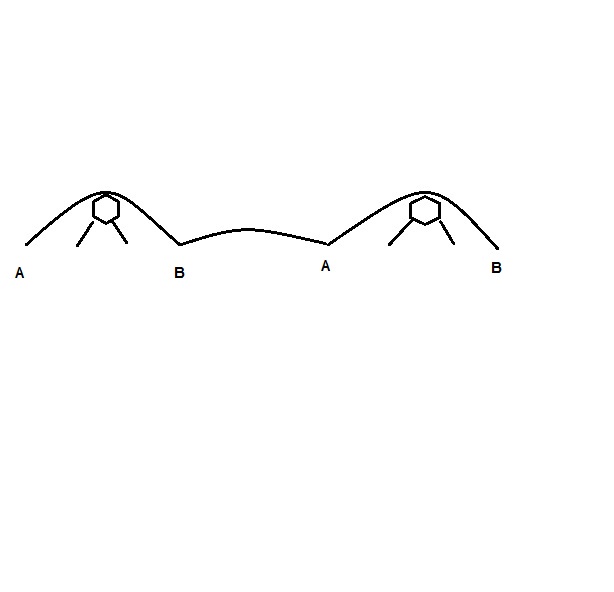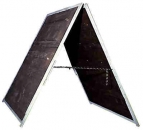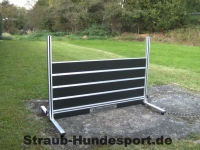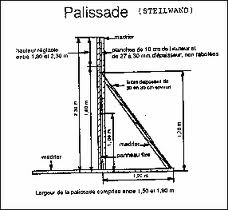
This is a placeholder text
Group text
by vk4gsd on 02 February 2014 - 00:02
scared if i allow my dog to scale a wall that it will compromise his jumping technique, can/should both be trained??
by zdog on 02 February 2014 - 01:02
I always do jumping make it clear what jumping means. Over the hurdle, no touch. When its solid I do the palisade and do not have any problems with them.
by Blitzen on 02 February 2014 - 03:02
by vk4gsd on 02 February 2014 - 04:02
thanks for the input blitzen, i wish i was at your level and could look down mockingly on anyone else with training problems, maybe one day i will be that great...
zdog, you ver used cavelleti (spl?), i made mistake of getting dog as pup in hyperdrive to start training anything, problems are coming out now with reckless speed and little thought to good foot placement etc, live and learn i guess.
zdog, you ver used cavelleti (spl?), i made mistake of getting dog as pup in hyperdrive to start training anything, problems are coming out now with reckless speed and little thought to good foot placement etc, live and learn i guess.
by Blitzen on 02 February 2014 - 04:02
For pete sake, it was a joke, VK.
by beetree on 03 February 2014 - 12:02
Blitzen, that was hysterical. Who knew those bunnies could hop like that! Come on, Pete, have a good laugh! 
by Koach on 03 February 2014 - 14:02
VK4GSD,
Start with the hurdle (jump). Only when the dog does the hurdle very well for the desired height without touching the top bar do you introduce the wall (palisade). Starting with the wall may condition your dog to put his feet on the hurdle's top bar.
http://www.youtube.com/watch?v=lLT5NhiooEI&feature=youtu.be
http://www.youtube.com/watch?feature=player_detailpage&v=zVdnWFuK-eg
Hope this helps,
GG
Start with the hurdle (jump). Only when the dog does the hurdle very well for the desired height without touching the top bar do you introduce the wall (palisade). Starting with the wall may condition your dog to put his feet on the hurdle's top bar.
http://www.youtube.com/watch?v=lLT5NhiooEI&feature=youtu.be
http://www.youtube.com/watch?feature=player_detailpage&v=zVdnWFuK-eg
Hope this helps,
GG
by Sunsilver on 03 February 2014 - 14:02
VK, cavaletti are used to teach horses proper foot placement, as they are solid, and do not fall down if the dog hits them.If your dog is charging through obstacles, they might work. However, you need to get the spacing between them right, to allow the dog to complete a full stride between them, including the takeoff and landing point. (see diagram for explanation).
Another thing I can tell you from my show jumping days is an animal measures the height of an object from the ground line to the top pole. If there is too much space in between, it MAY misjudge the size of the jump. That's why you should always have a clearly defined ground line (a pole laid on the ground) and not too much empty space between it and the top of the jump.
What sort of jump are you training over? If the dog is charging through it, you need to make sure the jump is soilid. Window jumps work well, but don't go too high until the dog is doing well with a small jump, then GRADUALLY increase the height.
A is the dog's takeoff point, and B is the landing point. The distance from B to A should be the same as the dog's regular stride at a lope. If you have the poles too close together, the dog will have to shorten its stride before jumping the second cavaletti, and it will make the jump awkward, and increase the likelihood of hitting the pole. Too far apart, and the same thing happens. The distance from takeoff point at A to landing point at B should also be about the same as the dog's natural stride, and must be factored into the distance when placing the poles.

Another thing I can tell you from my show jumping days is an animal measures the height of an object from the ground line to the top pole. If there is too much space in between, it MAY misjudge the size of the jump. That's why you should always have a clearly defined ground line (a pole laid on the ground) and not too much empty space between it and the top of the jump.
What sort of jump are you training over? If the dog is charging through it, you need to make sure the jump is soilid. Window jumps work well, but don't go too high until the dog is doing well with a small jump, then GRADUALLY increase the height.
A is the dog's takeoff point, and B is the landing point. The distance from B to A should be the same as the dog's regular stride at a lope. If you have the poles too close together, the dog will have to shorten its stride before jumping the second cavaletti, and it will make the jump awkward, and increase the likelihood of hitting the pole. Too far apart, and the same thing happens. The distance from takeoff point at A to landing point at B should also be about the same as the dog's natural stride, and must be factored into the distance when placing the poles.

by Sunsilver on 03 February 2014 - 15:02
Koach, obviously, he's not going to start over a jump that high!
I wouldn't have anything on top of the jump the dog can knock down easily. We use a window jump (see photo) for training. If a dog REALLY screws up its jump it CAN knock the whole jump over, but it is going to really feel it. That's why you start with the jump really low.
The one we use has individual 3 to 4 " wide boards that can be slid in and out of the channels on either side of the jump to adjust the height. As Koach says, make sure the dog is jumping confidently at a low level before going higher.
P.S.: This jump does not have a clear ground line. The bottom of the jump is off the ground slightly. The dog will likely measure the height of the jump from the bottom of the wood panel to its top, and thus be off by a few inches. I'd put a pole of some sort right on the ground to help the dog judge the height more accurately.
.jpg)
I wouldn't have anything on top of the jump the dog can knock down easily. We use a window jump (see photo) for training. If a dog REALLY screws up its jump it CAN knock the whole jump over, but it is going to really feel it. That's why you start with the jump really low.
The one we use has individual 3 to 4 " wide boards that can be slid in and out of the channels on either side of the jump to adjust the height. As Koach says, make sure the dog is jumping confidently at a low level before going higher.
P.S.: This jump does not have a clear ground line. The bottom of the jump is off the ground slightly. The dog will likely measure the height of the jump from the bottom of the wood panel to its top, and thus be off by a few inches. I'd put a pole of some sort right on the ground to help the dog judge the height more accurately.
.jpg)
by susie on 03 February 2014 - 18:02
 This is a wall for IPO. You do start FLAT, so the dog learns to CLIMB. You are able to change the angle.
This is a wall for IPO. You do start FLAT, so the dog learns to CLIMB. You are able to change the angle. This is a hurdle for IPO, you start flat, too, and teach the dog to JUMP. You are able to change the size.
This is a hurdle for IPO, you start flat, too, and teach the dog to JUMP. You are able to change the size. This is a wall for Mondio, you are able to change the size, too. Please take care, that the dog does NOT JUMP DOWN, but runs down the wall!
This is a wall for Mondio, you are able to change the size, too. Please take care, that the dog does NOT JUMP DOWN, but runs down the wall!Otherwise you will have a sport invalide in the age of 6 or 7.
As long as you don´t have the possibility to trial ( and I know it`s difficult in OZ
Hope this makes sense for you.
Kind regards
Contact information Disclaimer Privacy Statement Copyright Information Terms of Service Cookie policy ↑ Back to top




